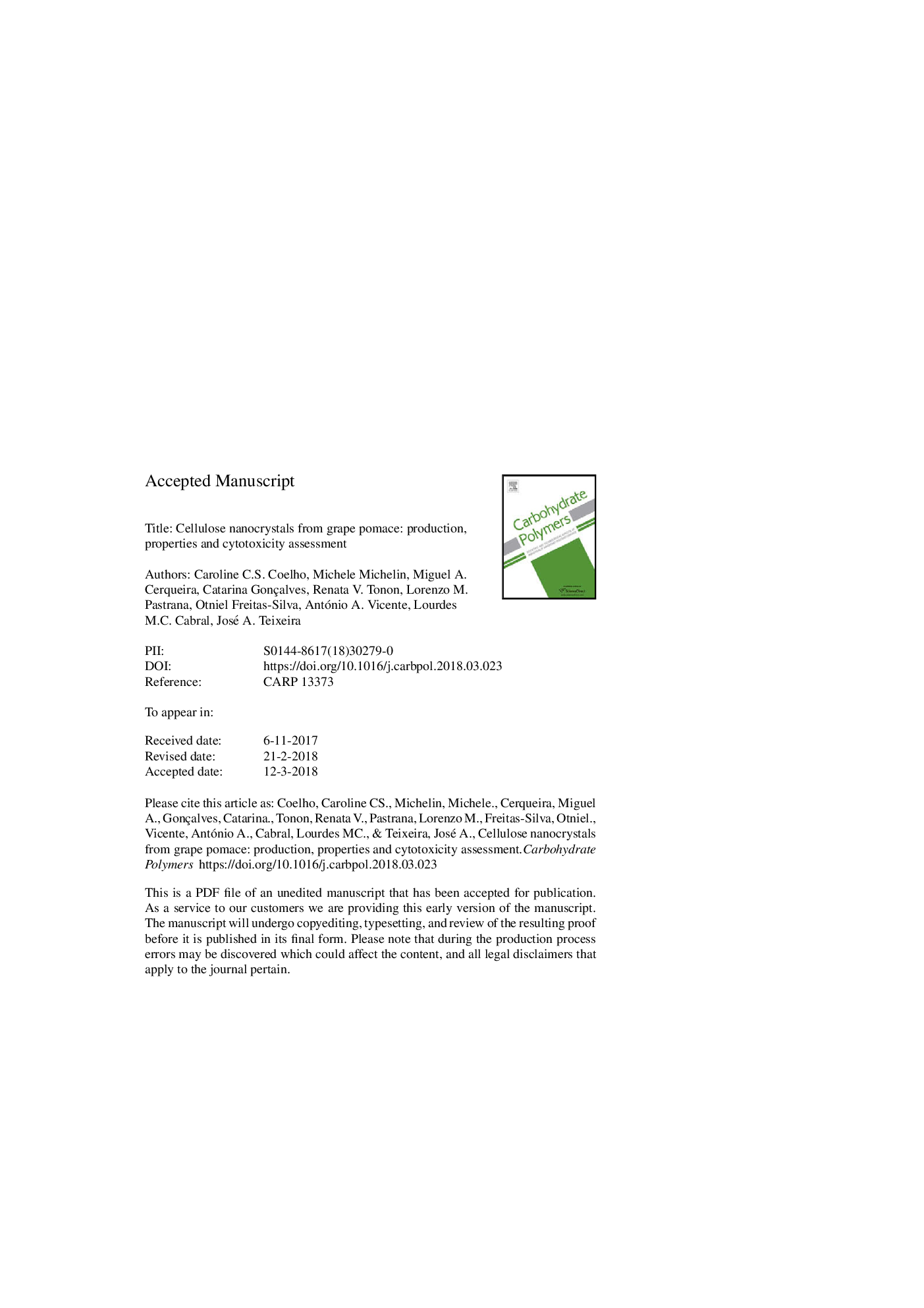| Article ID | Journal | Published Year | Pages | File Type |
|---|---|---|---|---|
| 7782846 | Carbohydrate Polymers | 2018 | 32 Pages |
Abstract
Cellulose nanocrystals (CNCs) were obtained from grape pomace through chemical and physical pretreatments. Bleached cellulose pulp was subjected to acid hydrolysis (AH) for 30 or 60â¯min and an ultrasound treatment to obtain CNCs (AH30S and AH60S). Compositional analyses of untreated (UGP) and pretreated (PGP) grape pomace showed the effectiveness of pretreatment in removing non-cellulosic components, recovering 80.1% cellulose in PGP (compared to 19.3% of UGP). Scanning and transmission electron microscopies were used to evaluate the CNCs morphology. AH in combination with ultrasound treatment led to needle-shaped structures and apparently more dispersed suspensions. Crystallinity index and thermal stability were studied by X-ray diffraction and thermogravimetric analysis, respectively. The AH60S sample presented high aspect ratio, crystallinity and thermal stability. CNCs toxicity was evaluated by exposing Caco-2 cells to CNCs suspension and evaluating their viability. Results showed that CNCs are non-toxic, opening the opportunity for their use on food and pharmaceutical applications.
Related Topics
Physical Sciences and Engineering
Chemistry
Organic Chemistry
Authors
Caroline C.S. Coelho, Michele Michelin, Miguel A. Cerqueira, Catarina Gonçalves, Renata V. Tonon, Lorenzo M. Pastrana, Otniel Freitas-Silva, António A. Vicente, Lourdes M.C. Cabral, José A. Teixeira,
